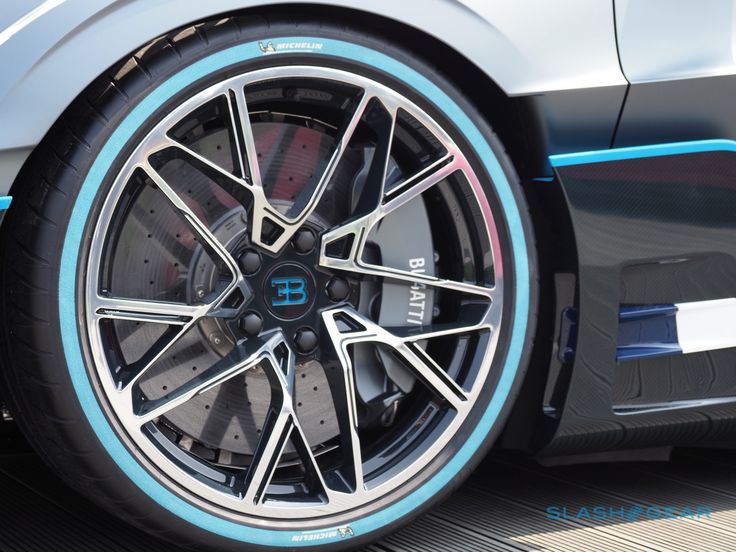Even the tires for the Veyron are unique. They're specially designed by Michelin to handle the stress of driving at 250 mph. The tires need to be sticky like a race car's and able to handle 1.3 G's on the skidpad. However, they also need to last longer than the 70 or so miles of a typical race tire.
Michelin therefore created completely new tires to handle the Veyron's unique requirements. In the rear, the tires are 14.4 inches (36.6 cm) wide. Specifically, the tires measure 245/690 R 520 A front and 365/710 R 540 A rear, where 245 and 365 are the width in millimeters (9.5 and 14.4 inches respectively). The rims are 520 mm and 540 mm in diameter (approximately 20 inches). These tires, in other words, are massive -- the rears are the widest ever produced for a passenger car.
Advertisement
The tires use the Michelin PAX system. Their pressure is monitored automatically, and they can run flat for approximately 125 miles (201 km) at 50 mph (80 kph). According to Michelin, the run-flat detection system "plays an integral role in active safety in PAX System. Its role is to inform you of a loss of pressure, either gradual or sudden." Once warned of an air leak by the PAX system, you can reduce your speed and head toward a tire repair center.
One advantage of the PAX system and its run-flat ability is that it eliminates the need for a spare tire.
""Photo courtesy Bugatti Automobiles S.A.S. Photo courtesy Bugatti Automobiles S.A.S.
""Photo courtesy Bugatti Automobiles S.A.S. Photo courtesy Bugatti Automobiles S.A.S.
The Veyron seats two in lavish style. The interior is swathed almost completely in leather -- the dash, seats, floor and sides are all leather. Only the instruments and a few metal trim pieces interrupt the leather experience.
The car also surrounds its occupants with every sort of electronic nicety, including a remarkable stereo system, navigation system, etc.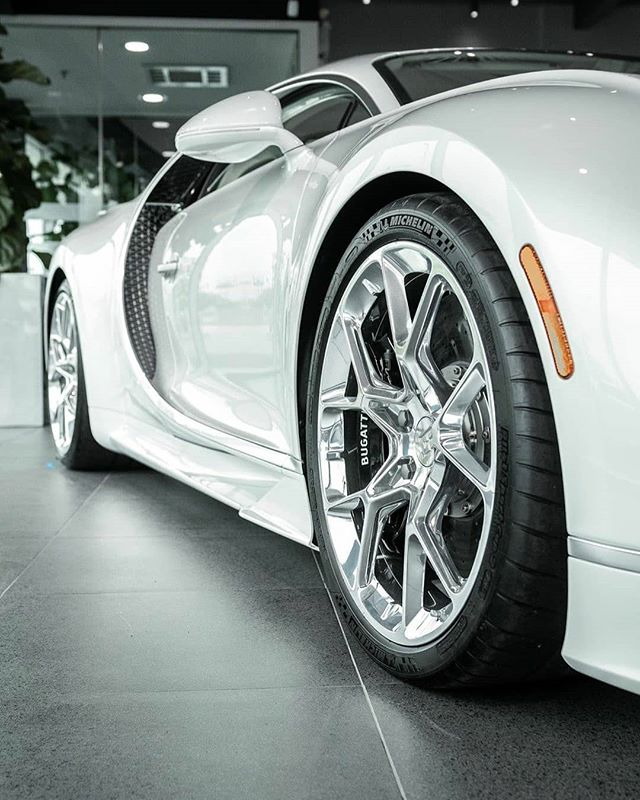
Is all of this worth a million bucks? Who knows. But regardless, the Veyron represents a remarkable technological achievement.
The Veyron is also likely to represent the far end of the automotive performance spectrum for some time to come. To create a car much faster will require adding even more weight, and delivering even more power to the wheels. The added weight means diminishing returns in the power-to-weight domain. Additional power means more wheelspin.
Look at a Champ car and consider how radical its appearance is compared to a passenger car. Consider also that a Champ car does not go much faster than the Veyron. The Veyron probably approaches the outer limits of the passenger car envelope, and we are unlikely to see much beyond the Veyron in terms of performance.
This is, in other words, as good as it gets.
For more information on the Bugatti Veyron and other high-performance luxury cars, check out the links below.
 com: Million-Euro Bugatti
com: Million-Euro Bugatti
Cite This!
Please copy/paste the following text to properly cite this HowStuffWorks.com article:
Marshall Brain "How the Bugatti Veyron Works" 16 April 2004.
HowStuffWorks.com. <https://auto.howstuffworks.com/bugatti.htm> 29 November 2022
Spending $250,000-$350,000 on a vehicle seems pretty pricey for most people, but if you’re in the market for a supercar like a Bugatti, that’s what you can expect to pay, and the cost doesn’t stop there.
For as much as it costs to buy a Bugatti, the cost of maintaining one is just as astonishing. Tires alone can cost a lot of money, but how much for Bugatti tires? If you’d like to find out, keep reading!
It costs somewhere around $42,000 to replace the tires on a Bugatti Veyron, and they have to be changed every 18 months whether it gets driven or not. The Veyron uses Michelin Pilot Sport PAX tires, which use special heat and friction-resistant compounds, making them low production and very expensive.
The Veyron uses Michelin Pilot Sport PAX tires, which use special heat and friction-resistant compounds, making them low production and very expensive.
Have you ever wondered what it’s like to own a Bugatti and maintain one? Keep reading to learn what it’s like just to keep up tire maintenance on a Bugatti Veyron or Chiron!
There are two main reasons why Bugatti tires are so expensive.
The first reason is Bugatti supercars use Michelin Pilot Sport PAX tires that use special heat and friction-resistant compounds for high-performance, which is not an inexpensive compound.
The second reason for Bugatti’s expensive tires is that they are low production tires.
Michelin does not crank out these tires and that kind of material on a regular basis, and to make up for the cost of special production, Michelin charges that much.
The uniqueness of the rubber compound that Michelin uses for its Pilot Sport PAX tires requires a glued air seal, unlike a traditional air-sealed tire.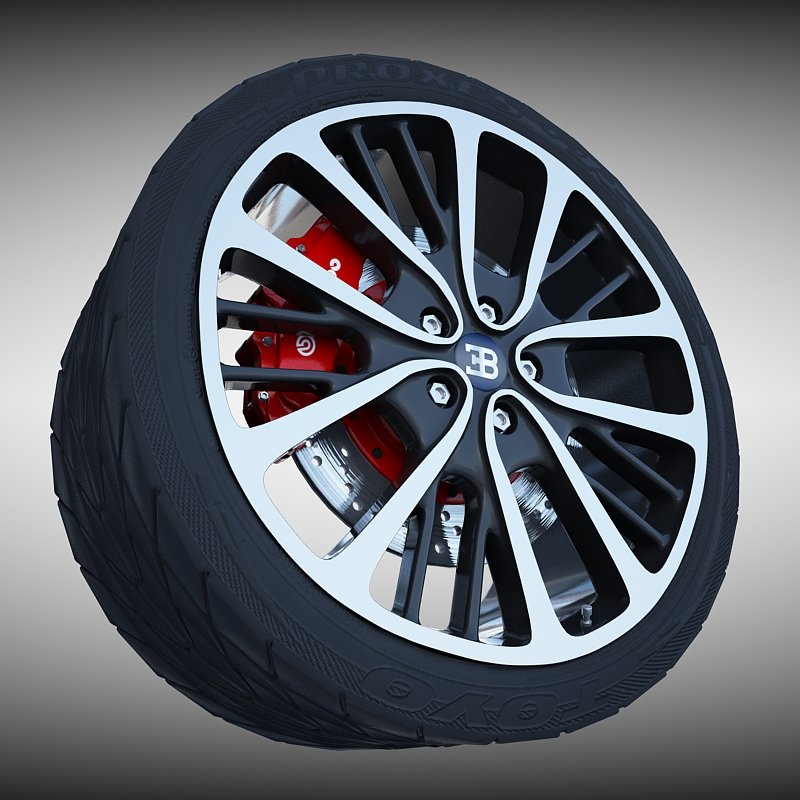
Unfortunately for the owner, with tires costing somewhere around $10,050 each, you have to have your tires changed every 18 months to make sure the glue stays sealed.
Bugatti tires can withstand a speed of 250 MPH, but they can only withstand that speed for about 15-minutes before they would need a break and possible maintenance.
The Bugatti Chiron uses a different set of tires than the Veyron does, due to it reaching top speeds of 300 MPH. Michelin Pilot Cup 2 tires are used on the Chiron.
To ensure safety when reaching speeds of 300, there’s an extra carbon fiber layer added.
The Bugatti has a very special size tire. In fact, the Veyron has the widest tires on the rear than any other production vehicle.
The official size of the tires is 285/30 R 20 in the front and 355/25 R 21 in the rear.
When it comes to width, the front tires measure 9.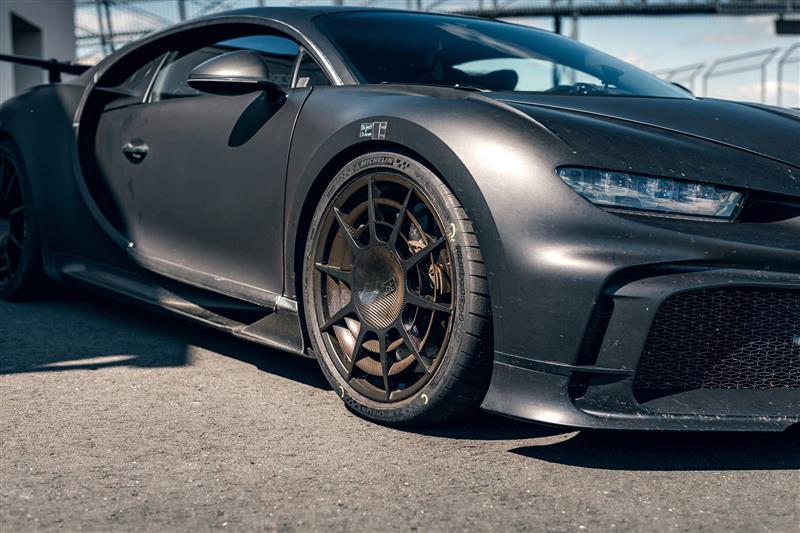 5 inches in the front and 14.4 inches in the rear (245 millimeters front and 365 millimeters rear respectively).
5 inches in the front and 14.4 inches in the rear (245 millimeters front and 365 millimeters rear respectively).
Wheel size for the Bugatti Chiron is very important, because of the speeds that it can reach. The perfect size is needed, and the wheel size Bugatti uses is 10Jx 20 ET.
The tires on the Bugatti Chiron are so rare that the company doesn’t have a replacement for them yet and/or a time frame when they should be changed.
This is because there is no way of telling how much one is going to be driven from one owner to the other.
Bugatti says that its employees will change your tires every 1,875 miles or 1.5 years just to be safe.
These tires are a little different than the Bugatti Chiron tires.
It’s estimated that the Veyron tires should be replaced every 1.5 years or 18 months.
The secret is the tires don’t actually have to be replaced, they just have to be serviced to ensure the glue stays sealed, whether you drive your supercar or not.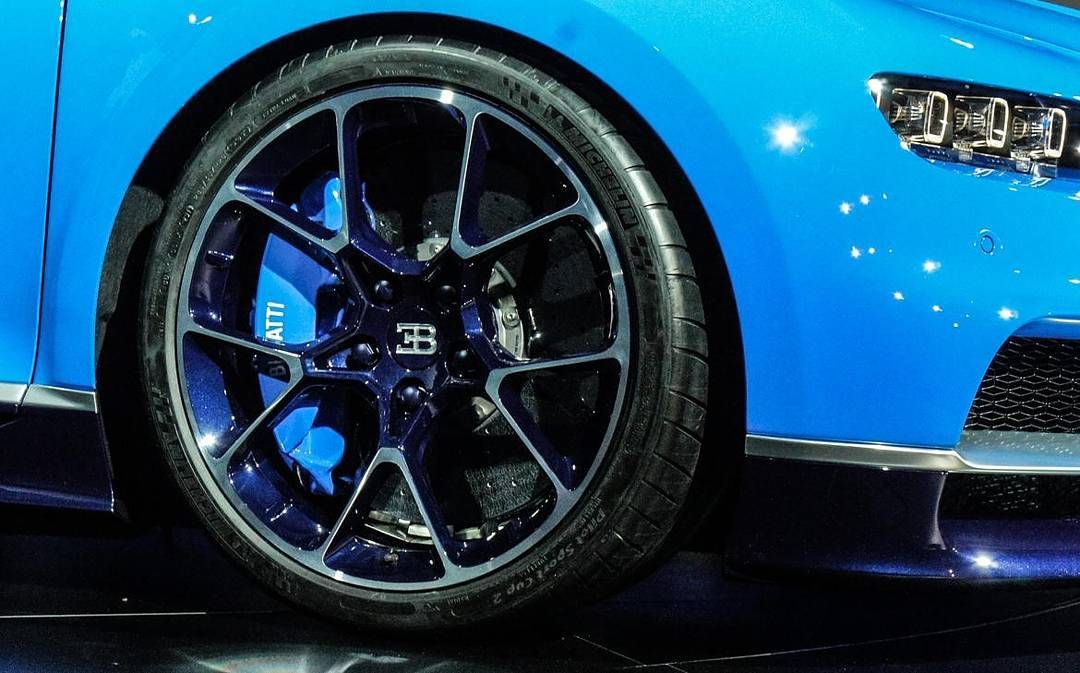
Unfortunately, the Bugatti rim situation is about as expensive as the tire situation. You can expect to pay somewhere around $69,000 for a set of Bugatti rims.
You may think that’s okay, because you don’t have to change the rims every time you change the tires.
This is true, but on Bugattis, you do have to change the rims every other tire change as recommended by Bugatti.
Directly from the factory, Bugatti tires are filled with nitrogen.
There is a difference between regular air and nitrogen, nitrogen being the more expensive (but better quality) alternative.
One must think: if your tires cost $42,000, the little extra you have to pay for nitrogen is probably worth it.
To know more, you can also read our posts on the most expensive tires, what are tires made of, and American tires companies.
Supercars are not only expensive, but they are also expensive to own and maintain, as you need to have $42,000 for new tires every 18 months. Bugattis are some of the rarest supercars in the world, and to prove it, even the tires are rare.
Bugattis are some of the rarest supercars in the world, and to prove it, even the tires are rare.
Home >> Autocatalog >> Bugatti >> Chiron >> 2017 Chiron >> Super Sport 8.0 W16 (1600 HP) AWD DSG
Auto catalog Login Registration Add car Car Specs API
Bugatti Bugatti Chiron 2017 Chiron Super Spert 8.0 W16 (1600 LS) AWD DSG SPORT 8.0 W16 (1500 LS) AWD DSG PUR SPORT 8.0 W16 (1,500 LS) AWD DSG 8.0 W16 (1,500 LS) AWD DSG
9000 9000 9000 9000 9000 9 94 US mpg
94 US mpg 
 4 sec
4 sec 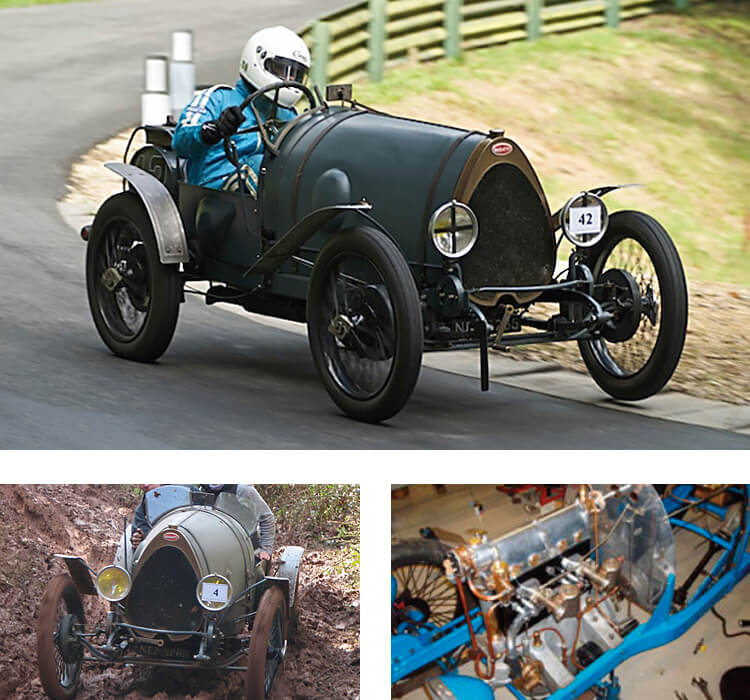 76 cu. in.
76 cu. in. 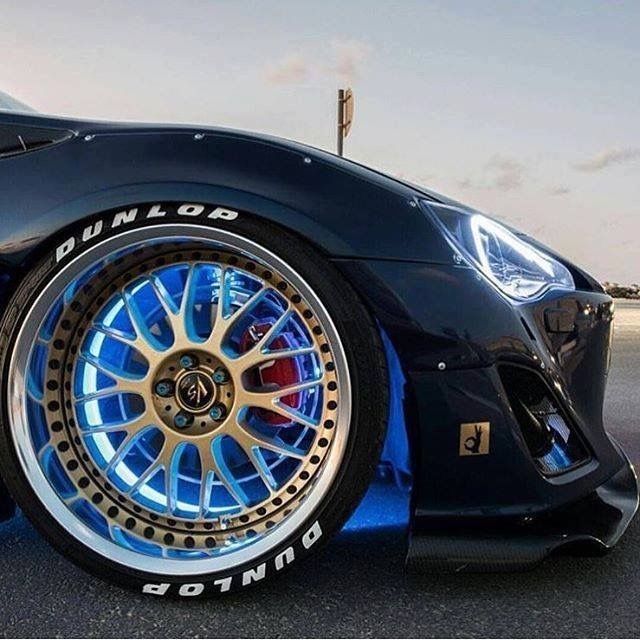 72 in.
72 in.
Search for a car brand IPOSISK for type
01
Mark car
02
Model
03
production
04 9000 The choice of tires for your Bugatti Chiron should be made carefully, taking into account various factors that include the type of car, size and how the vehicle is used in relation to the routes taken on a daily basis.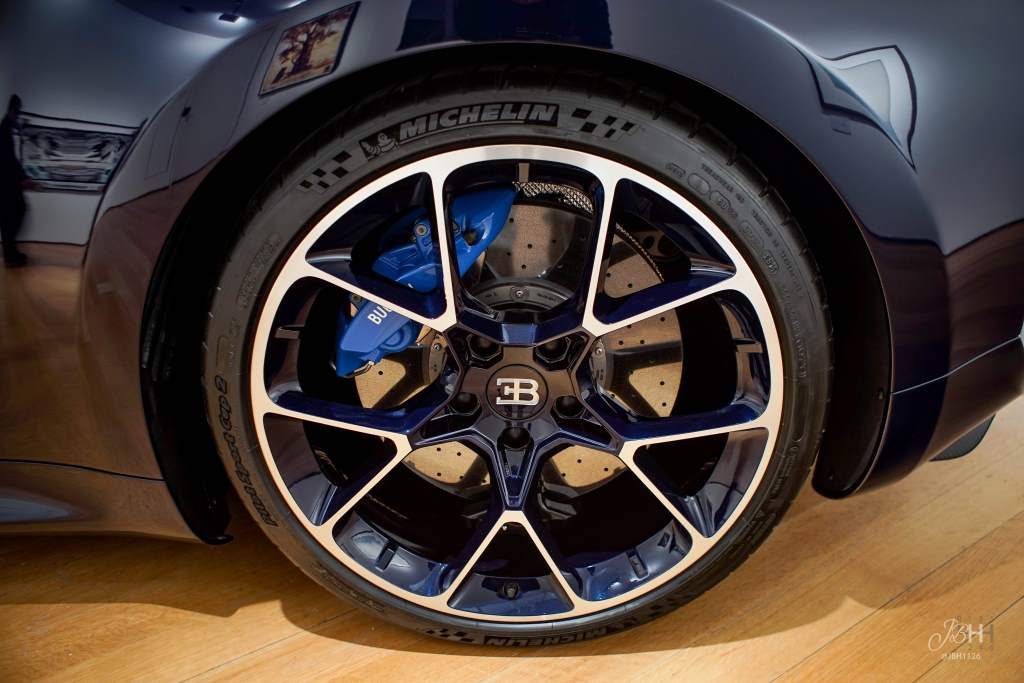 To assist you in this delicate search, Pirelli has created a complete catalog of tires for Bugatti designed to provide excellent driving performance in all conditions and complete safety. In the extensive Pirelli catalog you will find a wide range of tires for the Bugatti designed for high performance: winter tires, summer tires and All Season tires specifically for city cars, SUVs, sedans and sports cars. The Pirelli tires for Bugatti Chiron are the perfect combination of technology and innovation, made with a special tread that can withstand all weather conditions without any doubt. The tire's tread pattern is designed to provide maximum straight-line and cornering traction while reducing wet aquaplaning, braking distances and fuel consumption. Referring to the description of each tire type for Bugatti Chiron , you can check the specifications by comparing the different features.
To assist you in this delicate search, Pirelli has created a complete catalog of tires for Bugatti designed to provide excellent driving performance in all conditions and complete safety. In the extensive Pirelli catalog you will find a wide range of tires for the Bugatti designed for high performance: winter tires, summer tires and All Season tires specifically for city cars, SUVs, sedans and sports cars. The Pirelli tires for Bugatti Chiron are the perfect combination of technology and innovation, made with a special tread that can withstand all weather conditions without any doubt. The tire's tread pattern is designed to provide maximum straight-line and cornering traction while reducing wet aquaplaning, braking distances and fuel consumption. Referring to the description of each tire type for Bugatti Chiron , you can check the specifications by comparing the different features.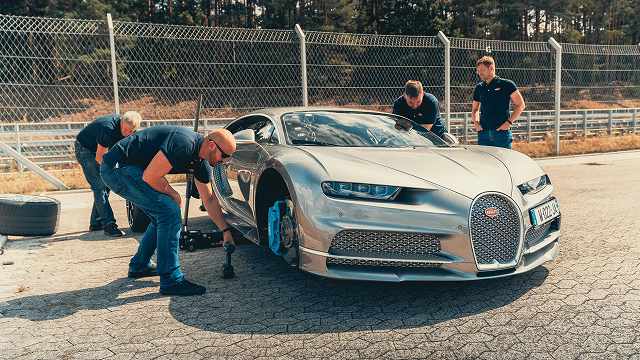 Having chosen the tires for Bugatti Chiron that best suit your requirements, contact your authorized Pirelli distributor for more detailed technical information and to make your purchase in complete safety. When it's time to change tires for your Bugatti Chiron car, choose quality and safety from Pirelli.
Having chosen the tires for Bugatti Chiron that best suit your requirements, contact your authorized Pirelli distributor for more detailed technical information and to make your purchase in complete safety. When it's time to change tires for your Bugatti Chiron car, choose quality and safety from Pirelli.
Thanks to the tire search by car brand, you can easily and quickly find the best solution for your needs: specify the make, model, year of manufacture and version of your car, and you will find out which type of Pirelli tire is best for a specific car, based on the technical characteristics and standardization criteria. Below you can find a list of tire sizes that can be installed on this vehicle instead of tires installed earlier. Terms and Conditions
Thanks to the tire search by car make , you can quickly and easily find the best solution for your needs: enter the make, model, year of manufacture and version of your car, and you will find out which type of Pirelli tire is best for a particular car, based on technical specifications and standardization criteria.